You have no items in your shopping cart.
Vallée de la Loire
Charles Joguet
(4 customer reviews)
Like many winegrowing estates, the history of the Charles Joguet vineyard is marked by the invasion of phylloxera and the gradual arrival of mechanization, which led them to develop mixed farming. Charles Joguet took over the estate to create the eponymous vineyard in 1957. He proved to be a revolutionary winemaker, thanks to his many innovations and inventions. He worked mainly with Cabernet Franc and Chenin to develop structured, elegant wines, often good for laying down. Find out more
No wines available for sale
Vallée de la Loire : most popular Voir tous les vins de la région
- -38%
- -16%
The winemaker
The producer
Charles Joguet founded the Domaine in 1957: after extensive artistic studies (painting and sculpture) initiated in Paris in 1949, he took over the family estate on the death of his father. With his mother, Madame Veuve Joguet-Malécault (whose initials JMV adorn our pewter capsules), and the help of a small horse, they are able to care for the vines and produce good wine. But the great qualities of the Clos de la Dioterie, now famous for its terroir and the age of its vines (80 years), gradually gave them the desire to deepen their knowledge. It was then that three men with strong personalities came on the scene, whose suggestions were to prove decisive. First of all, Marcel Angelliaume, a winegrower from Cravant, who said to Charles on the death of his father: "Charles, bottle your wine. You'll have a lot of worries, this and that, but if you're bored, come and see me. Besides, your mother will be better able to sell it if it's bottled.
Charles followed her advice, as well as that of Jacques Puisais in 1959, today Honorary President of the International Oenologists and founder of the Institut du Goût, and of Father Tafonneau in 1963, probably the best winemaker in all Chinon at the time. Thanks to the help he received from these exceptional men, and to certain fortunate circumstances that their trust enabled him to seize, Charles was able to realize his projects, planting between 1962 and 1976 Les Varennes du Grand Clos, Clos de la Cure and Clos du Chêne Vert, always innovating technically.
Charles Joguet was a non-conformist whose original ideas gave rise to many technical innovations: For example, as early as 1975, the first stainless steel tanks with pigeage were created at the Domaine, in collaboration with Jacques Puisais and the Guérin firm; another example is the harvesting of grapes in small 20 kg crates - so as not to crush the grapes - and with openwork - to allow the harvest to dry out in case of rain... Above all, by the end of the 1950s, Charles Joguet had forged his conviction that it was absolutely essential to harvest, mature and market wines from different parcels, whose terroir and vine age differed. He was inspired by the Burgundians, who had long practised this "cru" culture. At the time, this was a highly innovative idea in the Loire Valley, where most winemakers were practicing more or less skilful blending, which erased the particularities of each terroir, but also the freshness and vivacity of young vines as much as the more assertive structure of older vines.
It was in this spirit that, in 1982, Charles Joguet planted one hectare of Varennes du Grand Clos with Cabernet Franc de Pied - i.e. without rootstocks - in an attempt to recapture the characteristics of the pre-phylloxera wines. From the early 1980s onwards, Charles Joguet set about perpetuating the important work he had done to build up a Domaine in his own image. To achieve this, he decided to surround himself with men with complementary skills, to whom he could gradually hand over the keys to the winery, to devote himself once again to painting and sculpture. In 1983, he surrounded himself with Michel Pinard to oversee the vineyard and vinification. Michel was responsible for the mythical vintages of 1989 and 1990 (which still give us so much pleasure today...) and the vintages that followed up to 2004.
In 1985, the estate took on a new dimension with the arrival of Jacques Genet and his family as partners. In addition to a small hectare of vines on the lovely Monplaisir hillside, whose terroir is very similar to that of Chêne Vert, Jacques Genet contributed his land on the Beaumont-en-Véron Plateau, on which ten hectares of Cabernet Franc would be planted in the following years. Passionate about wine and vines, they chose to support the estate and its values. In 1997, just forty years after creating the Domaine that bears his name, Charles Joguet bowed out of the wine business to devote himself entirely to his other work, his other unquenched passion: painting.
Commitments
The estate changed ownership and expanded in the 1990s, then in the 2000s, a terroir analysis was put in place to make the switch to organic farming. This led to a return to tillage, an increase in leaf area, support for the vines and an end to all pesticide use. The 2016 vintage is the first to be officially certified organic.In 2011, the estate took a step towards biodiversity by carrying out studies on environmental ecosystems. In 2013, it joined Ecocert to officially certify the work carried out in the vineyard in organic farming.
Terroir
The estate's vines are planted on two main types of terroir:- Gravelly terraces that produce light, scented wines. These are known as "Easter wines" or "spring wines". - Clayey-siliceous and clayey-limestone slopes, which produce wines that can be kept for a long time.
The vineyards are home to two main grape varieties: Cabernet Franc and Chenin blanc.
Cabernet Franc, Touraine's king grape variety, nicknamed "le Breton" here, thrives in the Loire Valley, France's garden of mild climates. This temperate climate allows Cabernet Franc to develop its aromas and finesse. The aromas it produces are therefore floral and fruity, ranging from wild strawberry, raspberry and redcurrant to violet and peony; sometimes even, for certain vins de garde, it emanates a unique aromatic palette blending truffle, undergrowth and musk.
Chenin blanc, the Loire Valley's signature grape variety, is one of the region's oldest. It accounts for 3% of the Chinon appellation area and flourishes in clay-limestone soils, where it develops great dry white wines. It is also capable of producing great white wines with diverse characteristics: they can be sweet, dry or sparkling.
Wine
Les Varennes du Grand Clos is a 100% Cabernet Franc red wine. Characterized by great finesse, this Chinon can be approached around 3 or 4 years, but this fine cuvée can also be kept for around twenty years. Its aromas of red fruit and vanilla, and even coffee, are perfect with beef filet en croûte or veal with chanterelle mushrooms.

0 wines available
between 0 € and 0 €
between 0 € and 0 €

54 wine's scans
on Twil application
on Twil application
Find our technical sheets on Twil app
| Reference | Colour | Vintage | Appellation | community_reviews |
|---|---|---|---|---|
| Clos du Chêne Vert | Red | 2004 | Chinon | (2 reviews) |
| Les Petites Roches | Red | 2011 | Chinon | (1 reviews) |
| Les Petites Roches | Red | 2018 | Chinon | (1 reviews) |
| Clos du Chêne Vert | Red | 2008 | Chinon | not_rated |
| Clos De La Dioterie, Monopole | Red | 2019 | Vin de France | not_rated |
| Les Petites Roches | Red | 2009 | Chinon | not_rated |
| Chinon | Rosé | 2015 | Chinon | not_rated |
| Les Charmes | Red | 2019 | Chinon | not_rated |
| Chinon Cuvée Terroir | Red | 2006 | Chinon | not_rated |
| Silenes | Red | 2015 | Chinon | not_rated |
| Les Varennes du Grand clos | Red | 2019 | Chinon | not_rated |
| Clos Du Chêne Vert, Monopole | Red | 2016 | Vin de France | not_rated |
| Les Petites Roches | Red | 2012 | Chinon | not_rated |
| Chinon | Rosé | 2017 | Chinon | not_rated |
| Les Charmes | Red | 2016 | Chinon | not_rated |
| Les Varennes du Grand clos | Red | 2004 | Chinon | not_rated |
| Clos du Chêne Vert | Red | 2008 | Chinon | not_rated |
| Les Varennes Du Grand Clos | Red | 2011 | Vin de France | not_rated |
| Les Varennes du Grand clos | Red | 2006 | Chinon | not_rated |
| Les Petites Roches | Red | 2019 | Chinon | not_rated |

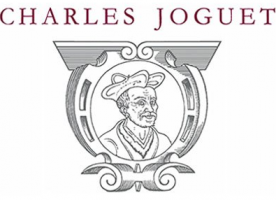
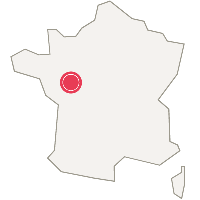



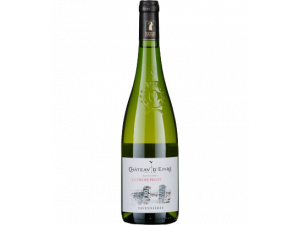






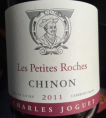




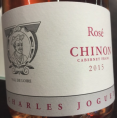


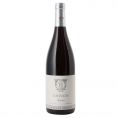





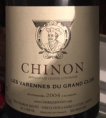








 TWIL - Achat de Vin
TWIL - Achat de Vin


